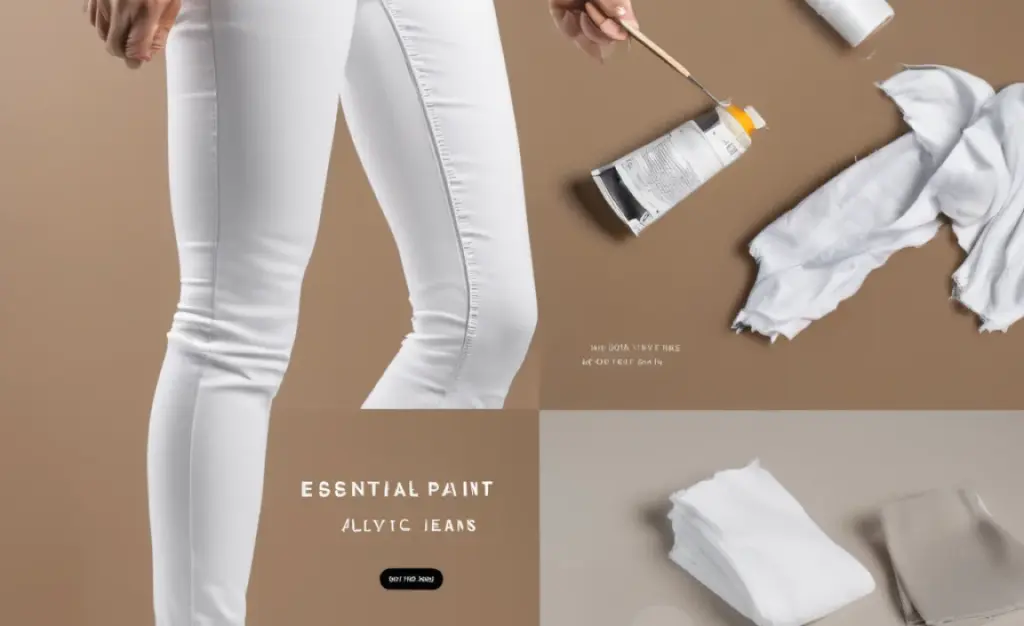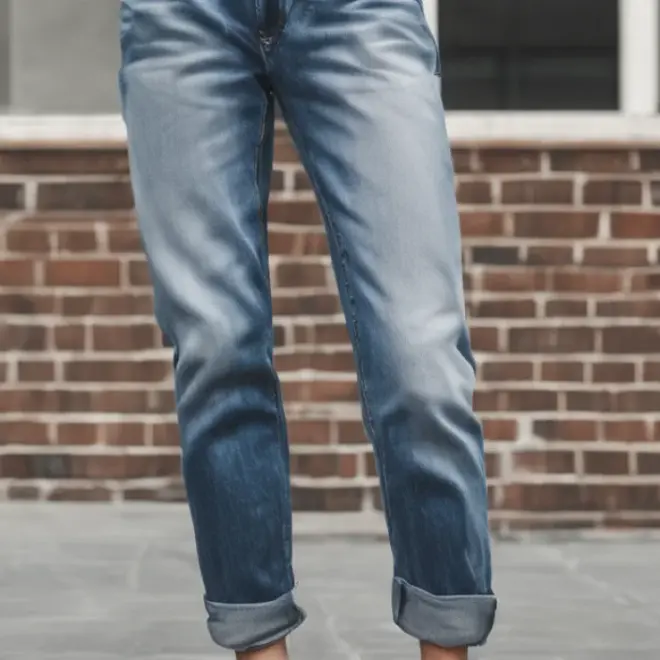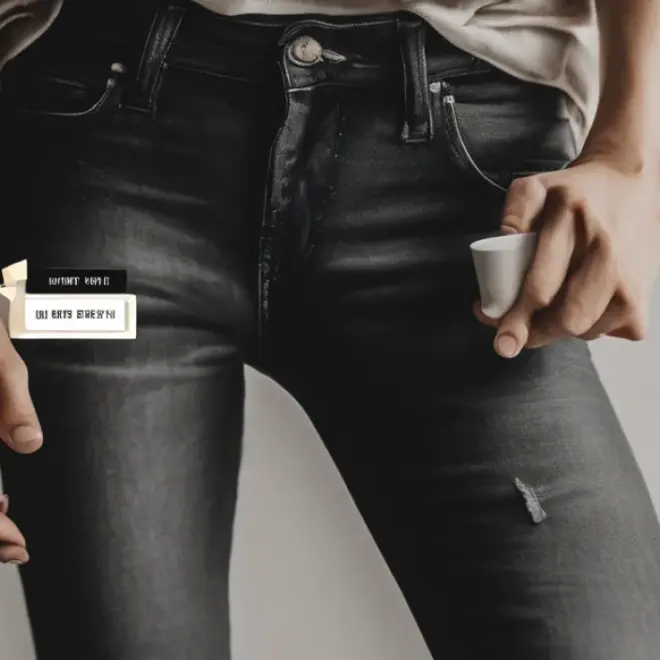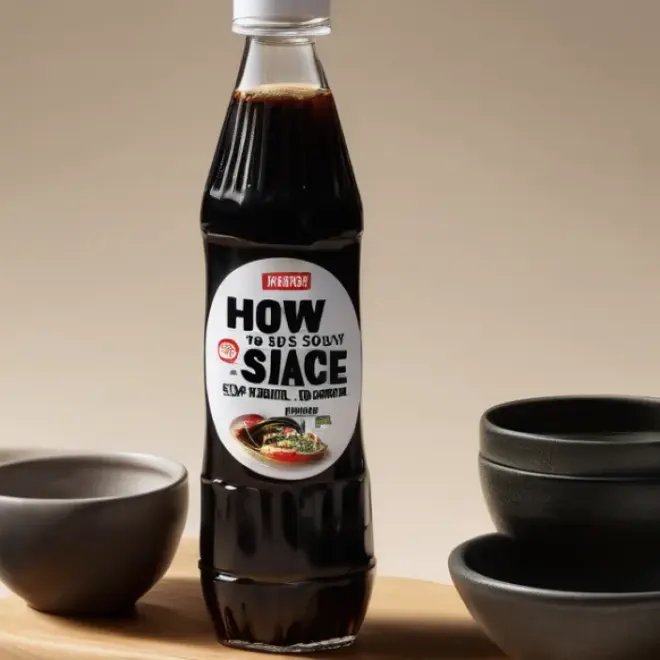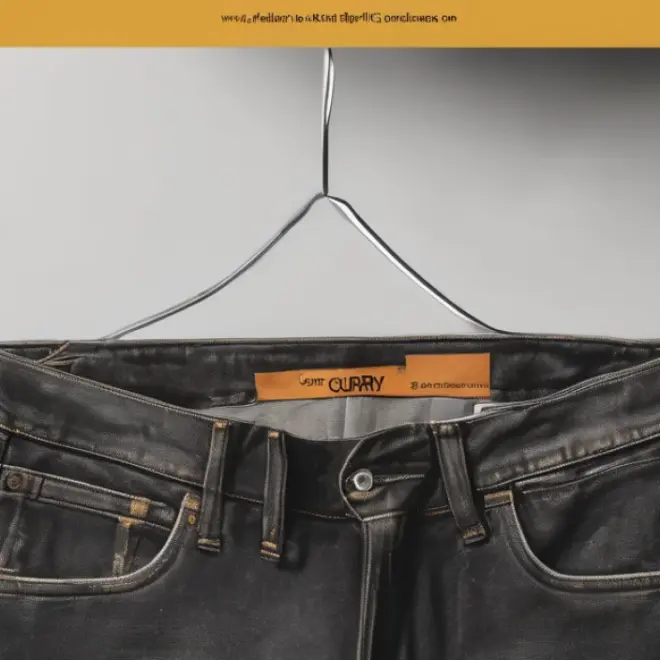Quick Summary: To remove fresh acrylic paint from white jeans, act fast. Gently scrape excess paint, then apply rubbing alcohol or an acrylic paint remover. For dried stains, a stronger solvent or professional cleaning might be needed, but success is achievable with patience and the right approach.
White jeans are a wardrobe staple, offering a fresh and stylish look for any occasion. However, they can also be a magnet for spills and accidents, especially when working with art projects or enjoying creative hobbies. Acrylic paint, in particular, is notorious for its vibrant colors and stubborn nature, making a mishap on your favorite pair of white jeans a common cause for concern. The good news is that with the right techniques and a little patience, you can successfully remove acrylic paint from your beloved white denim. This guide will walk you through everything you need to know, from immediate actions to tackling tougher, dried-on stains.
Understanding Acrylic Paint and White Jeans
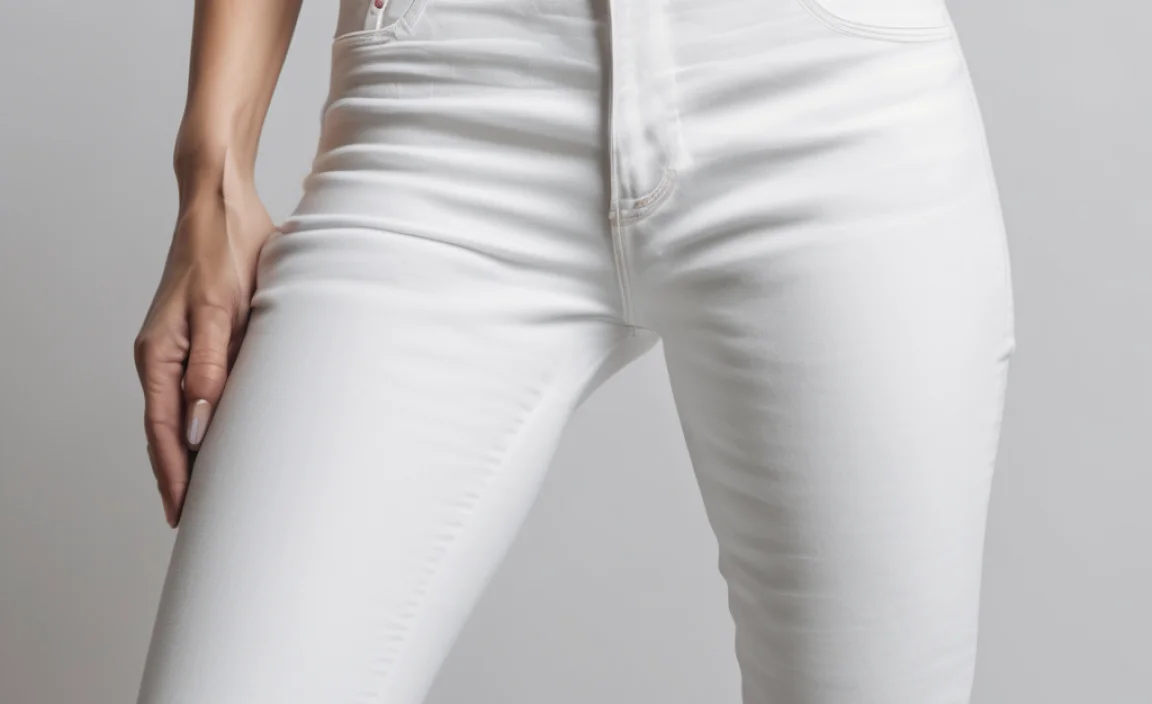
Acrylic paints are water-based when wet but become water-resistant and permanent once dry. This transformation is key to understanding why removing them can be tricky. The plastic polymers in the paint create a durable bond with fabric fibers. White jeans, while stylish, offer no color to hide behind, making any stain a prominent challenge. However, the natural properties of denim and the bright white surface can also make stains more visible, which is why prompt action is so important. Knowing the best methods can save your jeans from permanent damage.
Act Fast: Fresh Acrylic Paint is Easiest to Remove
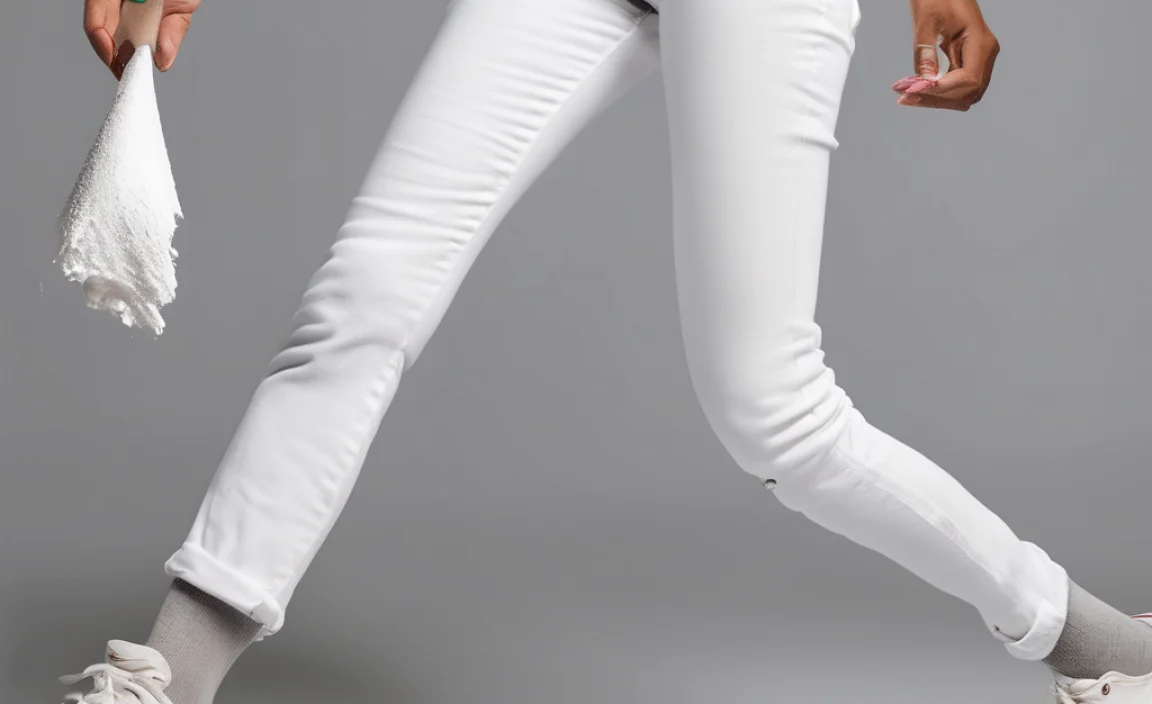
The golden rule for removing any stain, especially acrylic paint, is to tackle it as soon as possible. Fresh paint is still wet and hasn’t bonded with the fabric fibers yet, making it significantly easier to lift. If you notice a paint spill on your white jeans, don’t delay. Even a few minutes can make a difference in how difficult the stain will be to remove.
Immediate Steps for Fresh Spills
When paint hits your jeans, here’s what to do immediately:
- Don’t Rub: Resist the urge to rub the fresh paint. This will only push the paint deeper into the fabric fibers and can spread the stain.
- Scrape Off Excess: Use a dull knife, the edge of a credit card, or a spoon to gently scrape away as much of the excess wet paint as possible. Work from the outside of the spill inward to avoid spreading it further.
- Blot, Don’t Rub: Take a clean, dry cloth or paper towel and gently blot the stained area. The goal is to absorb as much of the liquid paint as you can without smearing it.
Essential Tools and Supplies
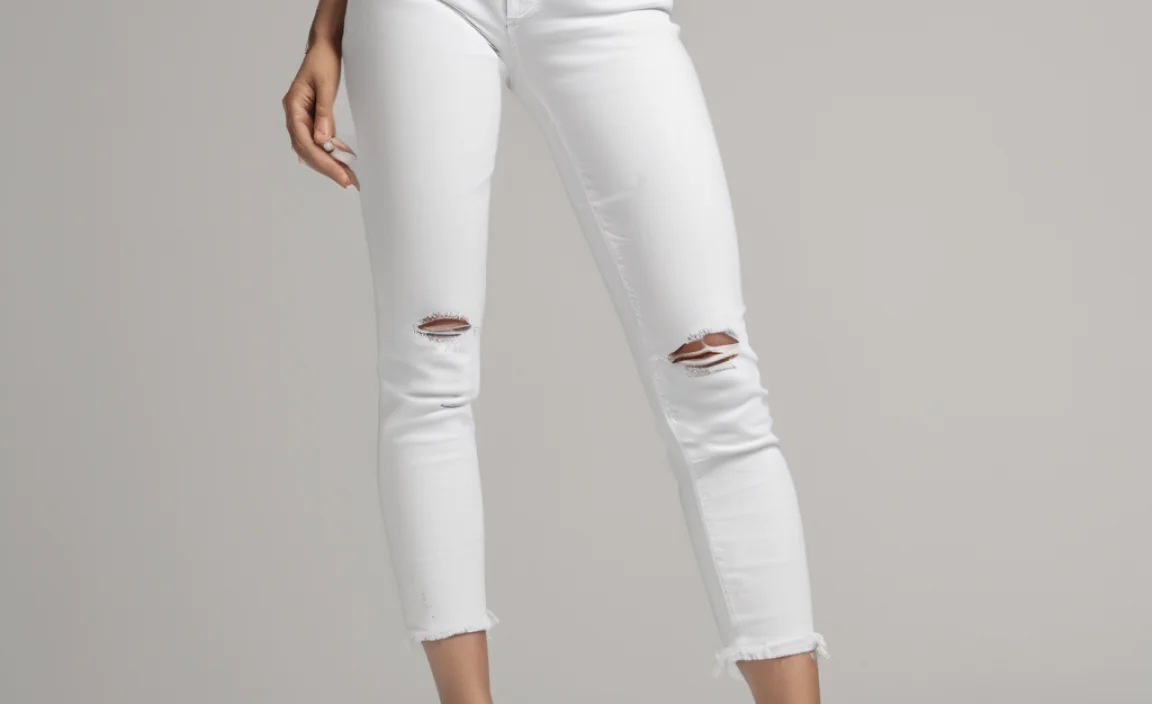
Before you begin the cleaning process, gathering your supplies will make the job smoother. Having everything ready means you can act quickly if a fresh spill occurs or proceed efficiently with a dried stain.
- Dull knife, credit card, or spoon (for scraping)
- Clean cloths or paper towels
- Rubbing alcohol (isopropyl alcohol)
- Mild liquid laundry detergent
- Stain remover specifically designed for paint or tough stains
- Cotton balls or swabs
- A basin or sink
- Protective gloves (optional, but recommended when using solvents)
- A work surface covered with old towels or newspaper to protect it
Step-by-Step Guide: Removing Fresh Acrylic Paint
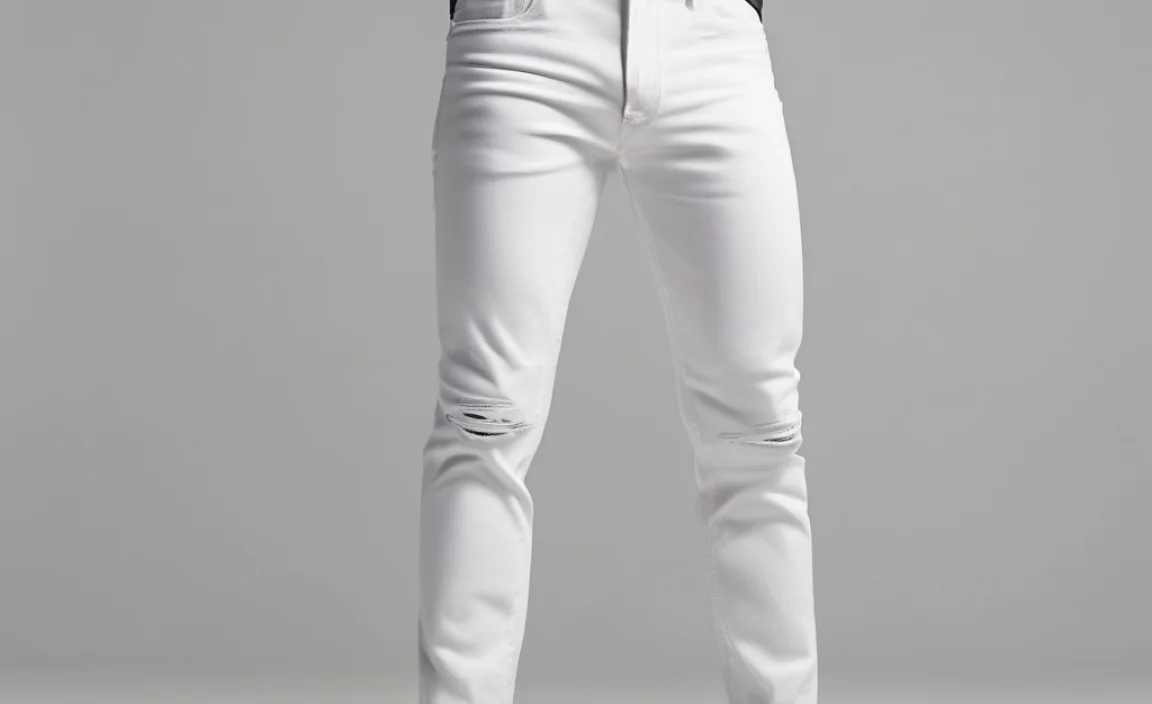
For paint that has just landed on your white jeans, quick action can often lead to a full recovery. The water-soluble nature of acrylic paint when wet is your ally here.
Method 1: Rubbing Alcohol (Isopropyl Alcohol)
Rubbing alcohol is an excellent solvent for fresh acrylic paint. It helps to break down the paint’s binder without damaging most fabrics. For more information on common household solvents and their uses, the U.S. Environmental Protection Agency offers valuable insights into safe and effective cleaning agents.
- Prepare the Area: Lay the stained section of the jeans flat on a clean surface covered with paper towels or an old towel. This will absorb the lifted paint and alcohol.
- Apply Alcohol: Dampen a clean cloth or cotton ball with rubbing alcohol.
- Blot the Stain: Gently blot the painted area with the alcohol-dampened cloth. Start from the outside edge of the stain and work your way inward to avoid spreading it. You should see the paint begin to transfer onto the cloth.
- Rinse and Repeat: As the cloth picks up paint, switch to a clean section or a new cotton ball. Continue blotting until no more paint is transferring. You can also gently rinse the area with cool water between applications if needed.
- Pre-treat with Detergent: Once you’ve removed as much paint as possible with alcohol, apply a small amount of mild liquid laundry detergent directly to the remaining stain. Gently rub it into the fabric with your fingers or a soft brush.
- Wash as Usual: Launder the jeans according to their care label instructions, using cold water.
- Check Before Drying: Crucially, check the stained area before putting the jeans in the dryer. Heat from the dryer will set any remaining stain, making it permanent. If the stain is still visible, repeat the alcohol treatment or try a different method.
Method 2: Mild Dish Soap and Water
For very minor fresh spills, sometimes a simple approach is all that’s needed. Dish soap is designed to break down grease and grime, and can also be effective on fresh paint.
- Scrape Excess Paint: As with other methods, start by gently scraping away any thick, wet paint.
- Rinse Underside: Hold the stained fabric under warm running water, letting the water flow through the back of the stain. This helps push the paint out of the fibers.
- Apply Dish Soap: Rub a small amount of mild liquid dish soap directly into the stained area. Use your fingers or a soft brush to work it in gently.
- Let it Sit: Allow the soap to sit on the stain for about 5-10 minutes.
- Rinse and Check: Rinse the area thoroughly with cool water. Check if the stain is gone.
- Wash if Necessary: If the stain has vanished, wash the jeans as usual. If a faint mark remains, proceed to the rubbing alcohol method.
Tackling Dried Acrylic Paint Stains
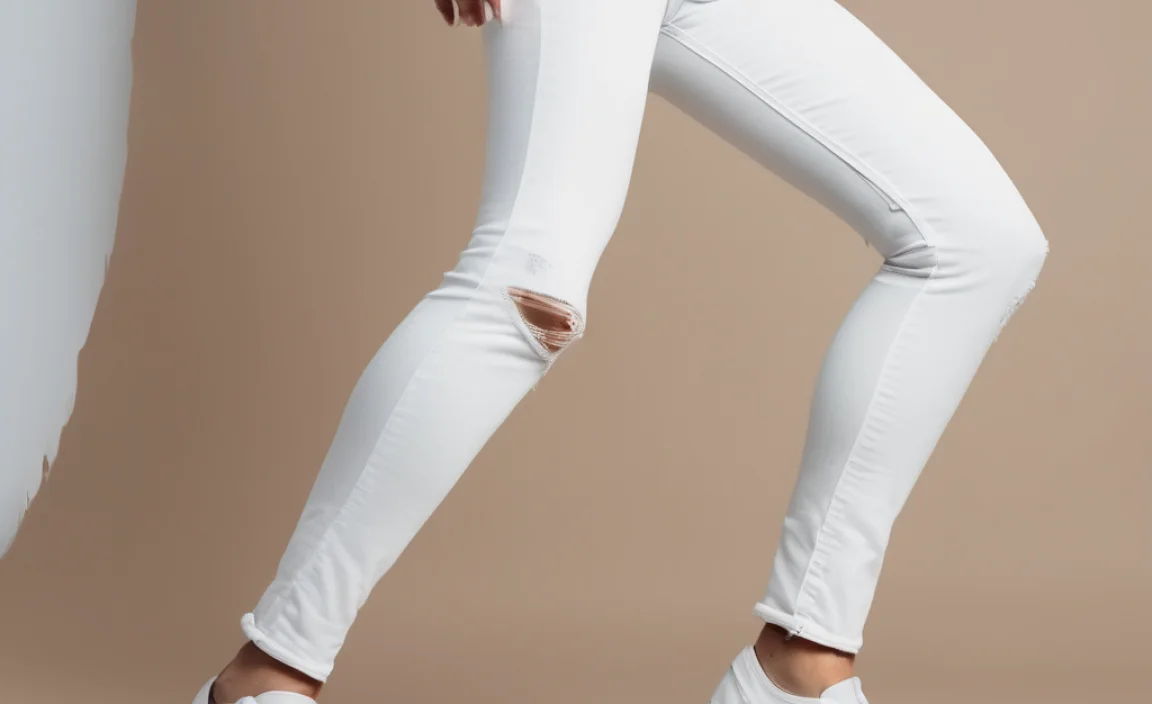
Dried acrylic paint is much tougher to remove because the plastic polymers have fully cured and bonded with the fabric. This usually requires stronger solutions and more effort. Patience is key here; you might need to repeat steps or try different approaches.
Method 3: Commercial Acrylic Paint Removers or Solvents
There are products specifically designed to break down acrylic paint. Always follow the manufacturer’s instructions carefully, as these products can be potent.
Important Note: Always test any strong solvent on an inconspicuous area of the jeans first (like an inside seam) to ensure it doesn’t discolor or damage the fabric.
- Choose a Remover: Look for products advertised as acrylic paint removers or strong fabric stain removers. Some common household solvents like nail polish remover (acetone) might work, but they can be harsh and may affect fabric color or texture. Specialized removers are often safer.
- Protect Your Workspace: Cover your work surface thoroughly. Wear gloves to protect your hands.
- Apply the Remover: Following product instructions, apply the remover to a clean cloth or cotton swab.
- Work the Stain: Gently dab the stain with the remover. Do not oversaturate the fabric. Work from the outside in. You may need to let it sit for a few minutes, depending on the product.
- Scrape Gently: As the paint softens, you might be able to gently scrape away loosened flakes with a dull knife or even your fingernail.
- Rinse Thoroughly: Once you’ve treated the stain, rinse the area thoroughly with cool water to remove all traces of the solvent.
- Pre-treat and Wash: Apply a good-quality liquid laundry detergent directly to the treated area and let it sit for 15-30 minutes. Then, wash the jeans on a normal cycle in cold water.
- Air Dry: Again, air dry the jeans until you are absolutely certain the stain is gone.
For a general guide on fabric care and stain removal, resources like University of Missouri Extension often provide practical advice on laundry and fabric maintenance.
Method 4: Glycerin (for softening dried paint)
Glycerin can sometimes help to soften dried acrylic paint, making it easier to lift. It’s a gentler option that can be used before stronger solvents.
- Apply Glycerin: Apply a small amount of vegetable glycerin (available at most pharmacies) directly to the dried paint stain.
- Let it Penetrate: Allow the glycerin to sit on the stain for at least 30 minutes, or even a few hours, to help soften the paint.
- Scrape Gently: Try to gently scrape away softened paint with a dull edge.
- Proceed with Another Method: After softening, you can then proceed with the rubbing alcohol or a commercial paint remover method.
What to Avoid: Common Mistakes
When dealing with stubborn stains, it’s easy to get frustrated and make mistakes that can make the situation worse. Here are a few things to steer clear of:
- Rubbing Wet Paint: As mentioned, this embeds the stain.
- Using Hot Water Initially: Hot water can set protein-based stains and some pigment stains. Always start with cold or cool water for paint.
- Putting Stained Jeans in the Dryer: Heat is the enemy of stain removal. Never dry if any stain is still visible.
- Using Bleach Prematurely: While white jeans can handle bleach, it’s not always the best first-line defense for paint stains. Bleach can sometimes react with certain pigments in the paint to create a different, sometimes worse, color. Use it as a last resort and test it.
- Scrubbing Too Hard: Aggressive scrubbing can damage the fabric fibers, especially on delicate white denim, and can spread the stain.
Understanding Different Types of Paint Removers
The world of cleaning products can be overwhelming. Here’s a quick look at common options and their suitability for acrylic paint on white jeans:
| Product Type | How it Works | Best For | Cautions |
|---|---|---|---|
| Rubbing Alcohol (Isopropyl Alcohol) | Solvent; dissolves paint binders. | Fresh to moderately dried paint. Safe for most fabrics. | Can dry out skin; ensure good ventilation. |
| Mild Dish Soap | Surfactant; breaks down grease and oils, can lift some liquid paints. | Very fresh, minor spills. | May not be strong enough for dried or extensive stains. |
| Commercial Acrylic Paint Removers | Specialized solvents formulated to break down acrylic polymers. | Dried, stubborn acrylic paint. | Can be potent; always test on an inconspicuous area first. Wear gloves and ensure ventilation. |
| Nail Polish Remover (Acetone) | Strong solvent; can dissolve many substances. | Dried paint, as a last resort. | Harsh; can damage synthetic fabrics, remove color from dyed materials (though less of a concern for pure white), and weaken fibers. Test carefully. |
| Hydrogen Peroxide | Mild bleaching agent and oxidizer. | Can help lift discoloration after paint is removed. | Use diluted; can affect some colors. Less effective on the paint binder itself. |
| Chlorine Bleach | Oxidizer; breaks chemical bonds in colored compounds. | Last resort for set-in stains on 100% white cotton/denim only. | Can weaken fabric, cause yellowing over time, and damage elastic or embellishments. Never mix with ammonia. |
When to Consider Professional Cleaning
For very large, old, or deeply set acrylic paint stains, or if you’re hesitant to try strong solvents yourself, a professional dry cleaner might be your best option. They have access to specialized cleaning agents and equipment that can often tackle stains that are impossible to remove at home. Be sure to point out the stain and explain what it is and what you’ve already tried, as this information can help them choose the most effective treatment.
Frequently Asked Questions (FAQ)
Q1: Can I use nail polish remover on white jeans?
A: Yes, nail polish remover (especially acetone-based) can be effective for dried acrylic paint. However, it’s a strong solvent and can potentially weaken or damage certain fabric fibers. Always test it on an inconspicuous area first and use it sparingly, followed by thorough rinsing and washing.
Q2: Will bleach remove acrylic paint from white jeans?
A: Bleach can sometimes help lighten or remove residue after the bulk of the paint is gone, especially on 100% white cotton denim. However, it’s not always effective on the paint binder itself and can weaken the fabric over time. Use it as a last resort and always dilute it. Test first.
Q3: How long does it take to remove acrylic paint?
A: For fresh spills, a few minutes of blotting and detergent can work. For dried stains, it can take anywhere from 30 minutes to several hours of repeated treatment, soaking, and careful scrubbing. Patience is essential.
Q4: What if the paint stain is still there after washing?
A: If the stain persists after washing, DO NOT put the jeans in the dryer. Repeat the stain removal process using a method appropriate for the type of paint (fresh or dried). You may need to try a stronger solvent or a different approach. Air dry until you’re sure the stain is gone.
Q5: Can I use a commercial stain remover for all types of paint?
A: Most commercial stain removers are designed for common food, oil, or ink stains. For acrylic paint, it’s best to use a remover specifically formulated for paint or a strong solvent like rubbing alcohol or a specialized acrylic paint remover. Always read product labels carefully.
Q6: Is it safe to use rubbing alcohol on colored jeans?
A: While this guide focuses on white jeans, if you were to use rubbing alcohol on colored jeans, you would need to be very cautious. Rubbing alcohol can sometimes lift or fade dye. Always test on an hidden seam first and use it very sparingly.
Q7: My jeans are a blend, not 100% cotton. Does that change anything?
A: Yes, fabric blends can react differently to solvents. Synthetic fibers like polyester or rayon are more sensitive to harsh chemicals and heat. Always check the care label and test any cleaning solution on an inside seam or hidden area first to ensure it doesn’t damage the fabric’s texture or color.
Conclusion
Discovering an acrylic paint stain on your favorite white jeans can feel disheartening, but it doesn’t have to be a fashion emergency. By understanding how acrylic paint behaves and employing the right techniques, you can effectively rescue your denim. For fresh spills, swift blotting and the use of rubbing alcohol or mild soap are often enough. Dried paint demands a more determined approach, potentially involving commercial removers, careful solvent application, and repeated treatments. Remember the cardinal rule: never dry stained jeans in a hot dryer. With the right tools, a systematic process, and a bit of perseverance, you can restore your white jeans to their pristine condition, ready for your next outfit or creative endeavor.


